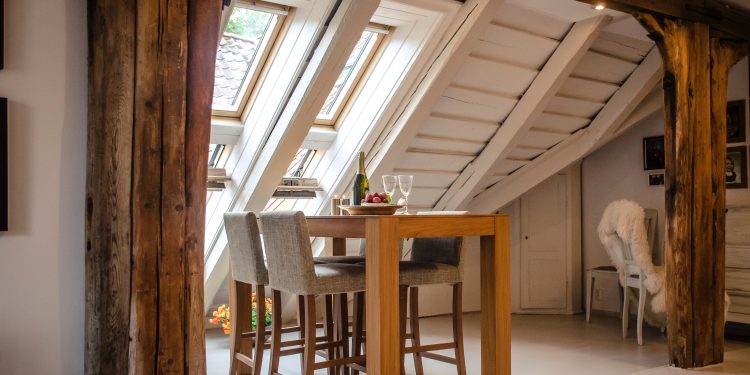5 things you need to know before converting your loft

By Matthew Currington, Technical Director, The Lighting Superstore
Loft conversions are ideal when space is at a premium, but while they’ll free up space in your home, they can be financially draining. An attic transformation means a lot of work, so the Lighting Superstore is here to walk you through the key considerations to ensure your conversion goes smoothly.
The lofty logistics
A loft conversion means more than just knocking down beams, with planning permission, building regulations and shared walls among the considerations.
Firstly, you need a minimum ceiling height of 2.2m to accommodate your conversion. If your ceiling doesn’t measure up, you’ll need to lower the floor or heighten the roof, which can be costly and messy work.
Most residential homes aren’t detached, so you’ll need a party wall agreement. If you’re making structural changes to a shared party wall, you’ll need to get written permission from a neighbour between 2–12 months before work begins.
Loft conversions typically don’t require planning permission if you meet certain criteria. However, large changes are required to meet building regulations to ensure the structure is stable and safe. If you’re unsure, your architect or surveyor should be on hand to guide you.
Choosing the right conversion
The most common loft conversion is a dormer conversion – an additional space built onto an existing roof. They create more room than other conversions and avoid the slanted walls typical of many conversions.
Dormer conversions typically cost upwards of £20,000 but benefit from not requiring planning permission.
If you have a sloped or ‘hipped’ roof, a single or double hip to gable conversion is likely the best option. This type of conversion extends outwards from the sloped side of the roof, adding a vertical wall, and can cost upwards of £30,000.
A mansard loft conversion requires the most structural change, spanning the length of your roof and extending it outwards to at least a 72-degree angle. This conversion is the most expensive and needs planning permission but will add a generous space to your home.
Design decisions
It’s important you decide how you want your conversion to look before beginning work, so you can accommodate your must-haves around non-negotiables like plumbing.
Plan for the biggest additions first, like bathroom fittings, built-in storage and large furniture, as these require the most space. You can accessorise after.
If you want a dark colour scheme, make sure there’s plenty of natural and artificial light available, like skylights and windows, to make the room feel spacious.
If you’re after a cosy atmosphere, avoid floor lamps as these aren’t space-saving. Artificial lighting like the Sabina wood effect table lamp, matching wall light and ceiling pendant adds character and warmth without taking up too much space.
Hidden costs
Set a budget before you approach architects and labourers, outlining exactly what you can and can’t afford.
Fees quoted by an architect tend to cover sketches, computer aided designs (CAD) and submissions to necessary authorities, but hidden costs like third party fees can creep in later unless they’ve explicitly stated otherwise.
The quotes you receive will be for the extension alone and additional costs for materials, labour, furniture and unforeseen problems will be added later.
So, before you finalise any paperwork, ask for a quote including potential and guaranteed additional costs so you’re not left cash-strapped down the line.
Conversion character
Loft conversions can add around 20 percent extra value to the cost of your home, so make the most of your new-found space.
You may be left with low ceilings or exposed beams, so use these as character features for your home by adding lighting or accessories. Also, use any little nooks and crannies as extra shelving storage.


